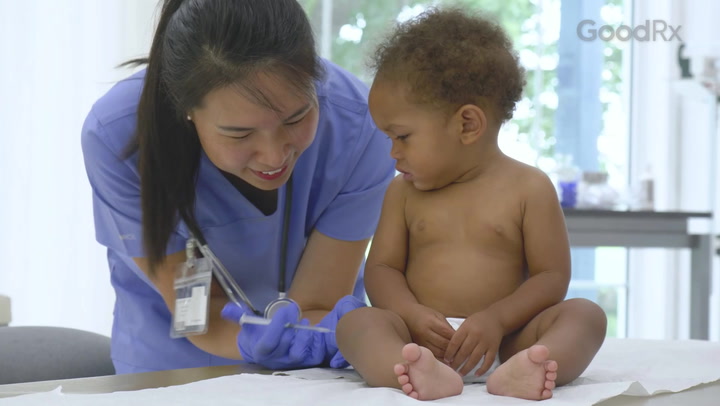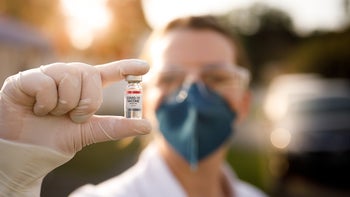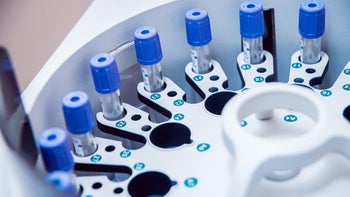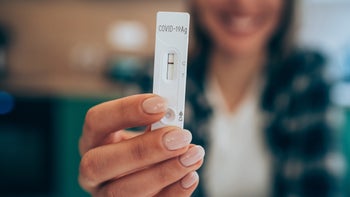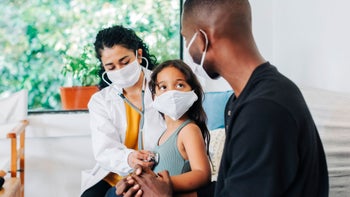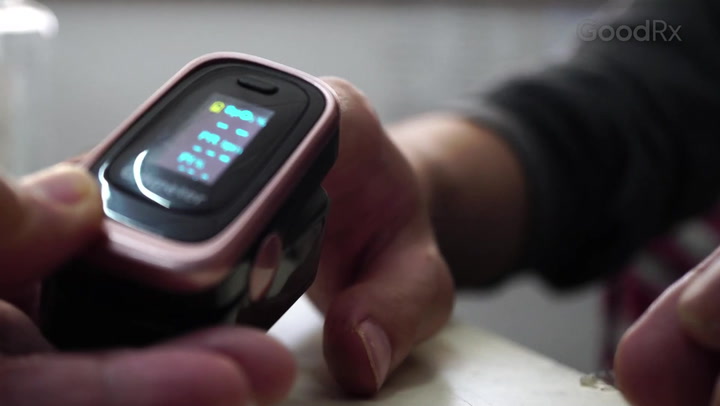
COVID vs. the Common Cold: A Timeline
Key takeaways:
COVID-19 and the common cold can feel similar, but there are important differences in their incubation periods, symptoms, and how long they last.
Common cold symptoms usually peak around days 1 to 3 of the illness, while COVID tends to have a more variable timeline.
Knowing the differences between the timelines of the common cold and COVID can help you tell the two apart. But the best way to tell the difference is to take a COVID test.
COVID isn’t just another cold. For many, it’s still a potentially dangerous and life-changing illness.
Table of contents
When you start to feel like you’re coming down with something, it’s natural to want to do everything possible to feel better fast. But it can be hard to tell what you have, especially since newer COVID strains can feel a lot like the common cold.
The best way to tell the difference is to take a COVID test. A positive test means you have COVID. But a negative test result doesn’t always rule it out — especially early in the illness. That’s why it’s helpful to know how COVID and the common cold are different, including what a typical course for each illness looks like. That way, you can get the care you need and keep yourself and those around you safe.
Differences between cold and COVID symptoms
The common cold is caused by over 200 different viruses. With a cold, you get these familiar symptoms:
Stuffy or runny nose
Sneezing
Headache
Cough
Sore throat
Mild body aches
Low fever
Save up to 60% on Farxiga
Healthy heart for less. Pay as little as $288 for 30 tablets of Farxiga with GoodRx - no insurance needed.

COVID, on the other hand, is caused by the SARS-CoV-2 virus. The original strain caused a respiratory illness that was very different from anything seen before. These days, COVID often causes symptoms similar to the common cold.
But with COVID, you can also have other symptoms. Along with “cold-like” symptoms, it can cause:
Fever
Chills
Shortness of breath
Trouble breathing
Nausea or vomiting
Diarrhea
Loss of taste or smell
Fatigue
Here’s a side-by-side comparison of common signs and symptoms:
Sneezing | - |
Stuffy or runny nose | Stuffy or runny nose |
Cough | Cough |
Sore throat | Sore throat |
Headache | Headache |
Mild body aches | Body aches |
Low fever | Fever or chills |
- | Shortness of breath |
- | Trouble breathing |
- | Loss of taste or smell |
- | Fatigue |
- | Nausea, vomiting, or diarrhea |
Keep in mind that symptoms can vary from person to person. Your symptoms may also depend on whether you’ve been vaccinated or if you’ve had COVID before. And COVID symptoms may continue to change as new variants emerge.
It’s important to remember: COVID isn’t just another cold. For some groups of people, it can still lead to severe and life-threatening complications that require hospital care. Even if you don’t have symptoms or have only mild illness, COVID can cause long-lasting symptoms called long COVID.
COVID timeline: Stages and symptoms
With COVID, symptoms can show up anywhere from 2 to 14 days after you’re exposed.
Is it the flu? Learn key differences between COVID-19 and the flu — plus tips to protect yourself from serious symptoms.
Compare symptoms: Some illnesses share similar symptoms. But some symptoms are more likely to point to a COVID-19 infection. Other symptoms mean you should seek treatment more quickly.
Best time to test: Have you been exposed to COVID-19 or started feeling sick? Our experts explain when you should take a test to confirm.
There’s also a wide range in how long your COVID symptoms will last. Some people don’t have any symptoms at all, while others still feel sick for weeks. This makes it hard to predict an exact timeline.
In general, COVID stages and symptoms tend to follow certain patterns:
Incubation period: This is the time between exposure to the virus and the first symptoms of COVID. For older strains the incubation period for COVID was usually 5 or more days. But with Omicron, it shortened to about 3 to 4 days. This incubation period may continue to change with new variants.
Symptoms start: After the incubation period, you may develop symptoms of COVID. Not everyone gets or notices symptoms, but common early symptoms include nasal congestion, sore throat, and a cough.
Symptoms peak: At some point, your COVID symptoms will peak and feel their worst. For Omicron, viral load peaked around day 4 — but it’s not clear whether this is still true for the newer FLiRT variants going around. During this stage, you might be more likely to have fever, muscle aches, and headache. In the past, some people lost their sense of taste or smell around days 4-5 (though this is less common now).
Symptoms lessen: After the peak, symptoms feel better day by day. On average, COVID symptoms last longer than a typical cold, but this varies from person to person. According to the World Health Organization, COVID symptoms typically last anywhere from 1-14 days.
Symptoms linger: Some symptoms, like breathing issues, headaches, and brain fog, may take longer to pass than others. Recovery time is often longer for older adults or those with underlying medical conditions.
When are COVID symptoms considered to be long COVID?
Most cases of COVID resolve within a few weeks. But some people develop long COVID. Long COVID refers to a wide range of health problems that persist for at least three months after the initial infection. You can develop long COVID even if you had mild symptoms of COVID, or no symptoms at all.
Cold timeline: Stages and symptoms
Like COVID, the exact timeline of cold symptoms and stages varies a bit from person to person.
But colds do follow a more predictable pattern of stages and symptoms, including how long cold symptoms last:
Incubation period: For most cold viruses, this lasts about 1-3 days. But it can be as short as 12 hours. For example, if you spend time with someone who’s sick in the morning and start feeling worn out that evening, you may be coming down with a cold.
Symptoms start: You’ll likely feel your first symptoms within 3 days of exposure. This could be a sniffle, a sore throat, or a vague feeling of being “off.”
Symptoms peak: Cold symptoms usually peak 1-3 days after your first symptom starts. This is when you’ll feel your worst. You might feel tired or have a cough, congestion, or a headache. While most adults don’t get a fever with a cold, it can happen in children.
Symptoms lessen: Most colds last about 7-10 days. You should feel your symptoms getting better during this time.
Symptoms linger: With the common cold, it’s normal for a cough or runny nose to linger for a couple of weeks. For some people, a cough can continue for months or even longer.
What to do when your cold doesn’t go away
If your symptoms start to improve but then worsen again, contact a healthcare professional. Worsening symptoms after 7 to 10 days can mean that you’re dealing with another health problem, like sinusitis or pneumonia.
Stages of COVID-19 vs. stages of a cold
Like with any upper respiratory illnesses, there’s a range of how sick you might feel if you catch either COVID or a cold. Here’s a comparison of the typical course of each illness.
Stages of COVID | Stages of cold | |
Incubation | 1-3 days | |
Symptoms peak | Varies (4 days in the past with Omicron; unclear for current FLiRT variants) | 1-3 days after symptoms start |
Start to feel better | Varies (typically 1-14 days) | Typically within a week |
Contagious period | Most contagious 1-2 days before symptoms start and during the first few days of symptoms | Most contagious during the first 2-3 days of symptoms |
Lingering symptoms | Breathing difficulties, headaches, brain fog | Cough, runny nose |
How long are you contagious with COVID or a cold?
Whether you have a cold or COVID, you could be contagious from the time you’re infected, through the incubation period, and until your symptoms go away.
How long you’re contagious will depend on how long your symptoms last. But you’re probably at your most contagious when your symptoms are at their worst. So, if you’re having lots of symptoms, you’re more likely to be contagious. And when your symptoms have resolved, you’re less likely to be contagious.
When can I go back to my regular activities?
With any respiratory virus, the CDC recommends staying home until:
Your symptoms are beginning to improve.
You haven’t had a fever in 24 hours without using fever-reducing medicine like Tylenol.
Once you’ve met these criteria, it’s probably safe to resume your normal activities and be around others. However, it’s a good idea to take precautions for the next 5 days, including:
Wearing a mask
Maintaining physical distance from others
Cleaning your hands regularly
Covering your mouth and nose when you cough or sneeze
Disinfecting frequently touched surfaces, like doorknobs, counters, and handles
Taking steps to improve your indoor air quality
Testing for COVID before spending time with others indoors
After the 5-day period, you can stop these additional precautions. By then, most people are no longer very contagious.
Frequently asked questions
It depends. Two oral medications, Paxlovid and Lagevrio, are available to treat COVID. They help protect you from getting very sick from COVID.
These medications are recommended for people with mild or moderate COVID symptoms who are at high risk of developing severe illness. This includes people who:
Are over 50
Are unvaccinated
Have underlying medical conditions
It’s hard to say. COVID symptoms can last anywhere from 1 to 14 days. This means that COVID could be a brief, mild illness for one person, and be more severe and last for weeks in someone else.
No. Both COVID and the common cold are caused by viruses. Antibiotics are only effective against bacteria — not viruses.
The bottom line
The latest COVID strains resemble the common cold more than ever before. But there are still important differences. If you catch a cold, you’ll likely start to feel better between days 4 and 5 and fully recover within 7 to 10 days.
With COVID, the timeline can vary. Some people feel it takes a week to start feeling like the worst is behind them, while others may feel better within a day or two. And then there’s long COVID, which can last for months to years after an initial infection.
The best way to tell the difference between a cold and COVID is to test for COVID. If your test is negative, test again in a couple of days. Though most people with COVID will only have mild symptoms, it’s still possible to get very sick. If you’re concerned about COVID or test positive, reach out to your primary care provider for guidance — especially if you’re over 50, immunocompromised, or have other health issues.
Why trust our experts?
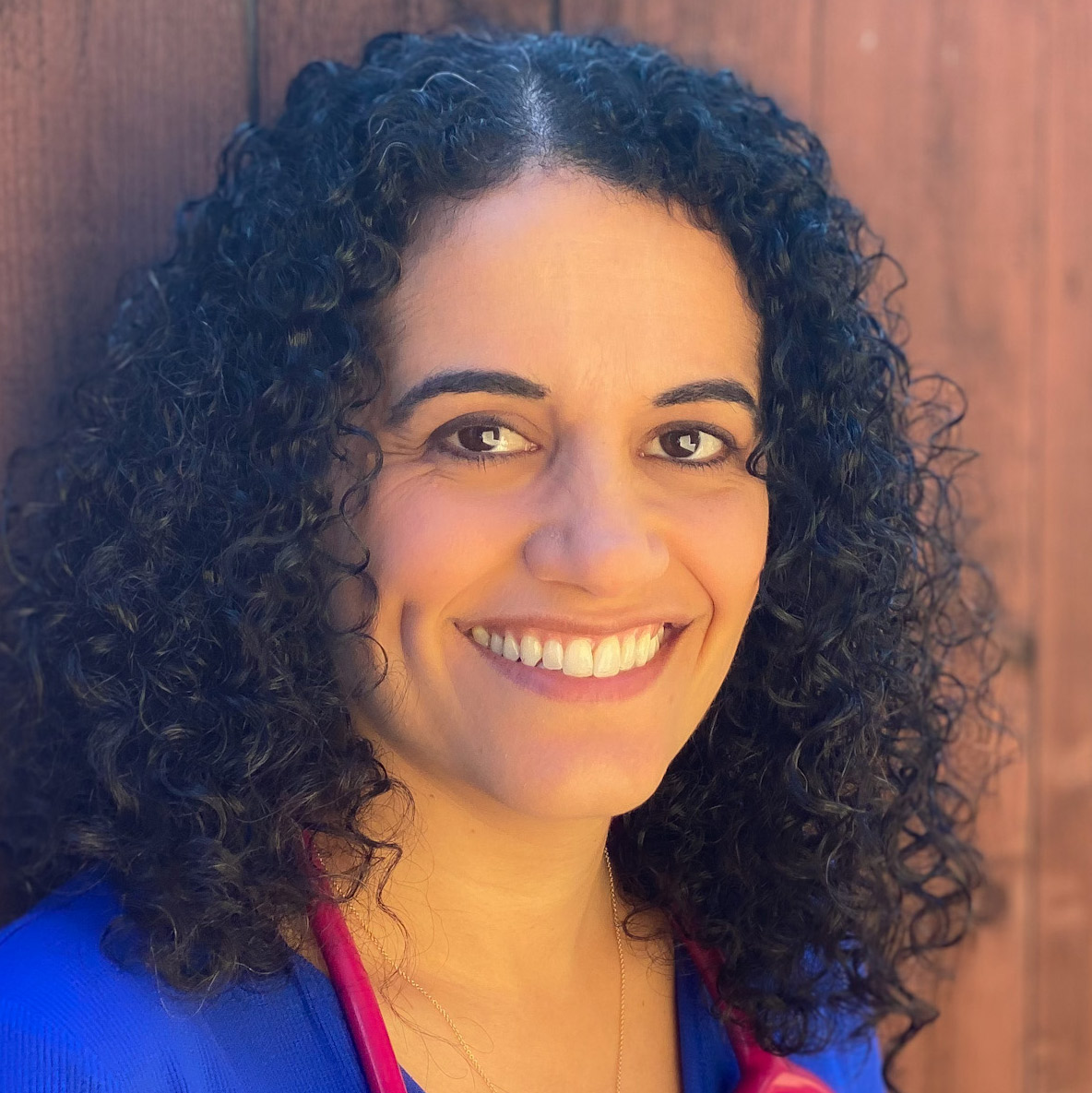


References
Allan, G. M., et al. (2014). Prevention and treatment of the common cold: Making sense of the evidence. Canadian Medical Association Journal.
Centers for Disease Control and Prevention. (n.d.). Preventing and managing common cold.
Centers for Disease Control and Prevention. (2024). About common cold.
Centers for Disease Control and Prevention. (2024). Clinical presentation.
Centers for Disease Control and Prevention. (2024). COVID-19 treatment clinical care for outpatients.
Centers for Disease Control and Prevention. (2024). Long COVID basics.
Centers for Disease Control and Prevention. (2024). Preventing spread of respiratory viruses when you’re sick.
Centers for Disease Control and Prevention. (2024). Respiratory virus guidance.
Centers for Disease Control and Prevention. (2024). Respiratory viruses and older adults.
Centers for Disease Control and Prevention. (2024). Symptoms of COVID-19.
Cox, D. (2024). How Covid-19’s symptoms have changed with each new variant. BBC.
Enfield, K. B. (2023). Why coughs can linger long after you recover from an illness. PBS News.
Frediani, J. K., et al. (2023). The new normal: Delayed peak SARS-CoV-2 viral loads relative to symptom onset and implications for COVID-19 testing programs. Clinical Infectious Diseases.
Gregory, C. O., et al. (2024). CDC Yellow Book 2024: COVID-19.
Katz, S. (2024). Common cold. Merck Manual.
Lane, A., et al. (2021). Clinical characteristics and symptom duration among outpatients with COVID-19. American Journal of Infection Control.
MedlinePlus. (2023). Common cold.
Nebraska Medicine. (2024). What COVID-19 variants are going around in October 2024?
Santos, R. E. A., et al. (2021). Onset and duration of symptoms of loss of smell/taste in patients with COVID-19: A systematic review. American Journal of Otolaryngology.
Thomas, M., et al. (2023). Upper respiratory tract infection. StatPearls.
World Health organization. (2023). Coronavirus disease (COVID-19).
Xu, X., et al. (2023). Assessing changes in incubation period, serial interval, and generation time of SARS-CoV-2 variants of concern: A systematic review and meta-analysis. BioMed Central Medicine.


